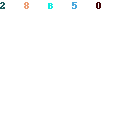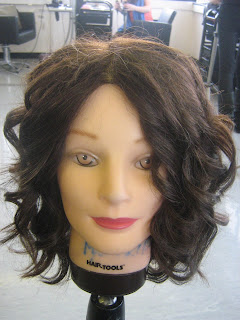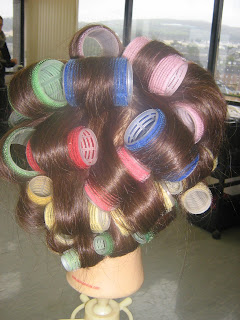Eczema is a condition in which patches of skin are unable to hold moisture so this causes the skin to go very dry, cracked and sore. It often appears in patchy areas which look almost like rashes, and the skin tends to itch and, in extreme cases, crack and bleed. The skin is usually very sensitive, so usually people with the condition are allergic to certain types of soaps and detergents. This makes it very difficult to find makeup which both soothes and compliments the skin.
 When looking for makeup products, it is best to choose products that are designed for sensitive skin. This means looking for products which are unscented, made with natural ingredients, and don't include harsh chemicals such as lanolin, propylene glycol, sodium hydroxide and sodium lauryl sulfate. A common problem with using makeup on eczema skin is the danger of cakey or clumpy skin, therefore it is best to avoid liquid foundation and instead stick to very lightweight mineral makeup. Different shades can downplay flaws; for example, using a very pale (slightly green) shade can reduce redness, but it is important not to use too much product - this only makes things worse! For eyes, it is better to use water-based eyeshadows as powders will simply gather in the dry areas. Also, water-based products are easier to remove with gentle makeup remover. It's best to avoid shimmery shades on dry areas as, again, this will highlight flaws. Pay attention to your makeup tools, also - clean brushes are a must!
When looking for makeup products, it is best to choose products that are designed for sensitive skin. This means looking for products which are unscented, made with natural ingredients, and don't include harsh chemicals such as lanolin, propylene glycol, sodium hydroxide and sodium lauryl sulfate. A common problem with using makeup on eczema skin is the danger of cakey or clumpy skin, therefore it is best to avoid liquid foundation and instead stick to very lightweight mineral makeup. Different shades can downplay flaws; for example, using a very pale (slightly green) shade can reduce redness, but it is important not to use too much product - this only makes things worse! For eyes, it is better to use water-based eyeshadows as powders will simply gather in the dry areas. Also, water-based products are easier to remove with gentle makeup remover. It's best to avoid shimmery shades on dry areas as, again, this will highlight flaws. Pay attention to your makeup tools, also - clean brushes are a must! Vitilgo is a condition which causes discolouration of certain areas of the skin. It usually appears in very uneven areas and creates a patchy effect on the skin which often grows over time. It is more noticeable on people with dark skin, as there is more of a contrast. It isn't particularly harmful, but it can be very embarrassing, partcularly if the condition is partcularly severe in areas such as the hands, neck or face. However, there are many options now in the beauty industry for makeup which is designed to cover up or camouflage skin complaints such as vitiligo.
Vitilgo is a condition which causes discolouration of certain areas of the skin. It usually appears in very uneven areas and creates a patchy effect on the skin which often grows over time. It is more noticeable on people with dark skin, as there is more of a contrast. It isn't particularly harmful, but it can be very embarrassing, partcularly if the condition is partcularly severe in areas such as the hands, neck or face. However, there are many options now in the beauty industry for makeup which is designed to cover up or camouflage skin complaints such as vitiligo.Using makeup is a simple and cheap option (as opposed to surgery, which some people resort to) for covering up vitiligo patches. Camouflage makeup comes in a variety of shades and textures, and it's best to choose a product which is light and airy and allows the skin to breathe, and does not make the skin look cakey. The person would choose a shade which matches their original skin colour, and blend it into the patchy areas. Starting from the inside and working outwards, a moderate amount should be applied evenly all over the affected areas. Special care must be taken to blend the edges properly, to achieve a more natural look. When using dyes, it is important not to go over the natural skin colour too much, as this could cause staining. It is recommended that powder is used to set, as this will make the colour last longer and will help prevent the product smudging or rubbing off on clothes or on contact. It is also important to use powder, particularly alongside sticks or liquids, to create a matte effect and to even the skin tone.





















